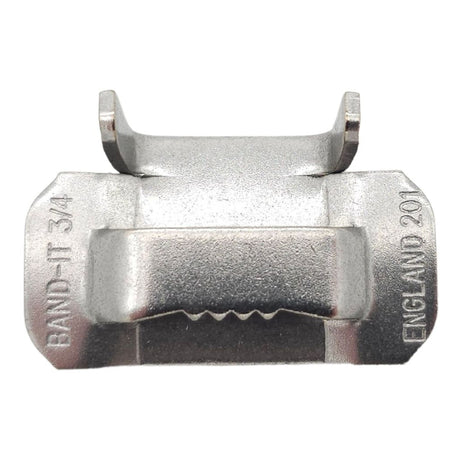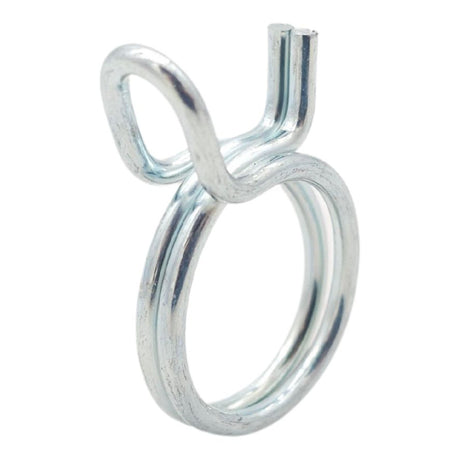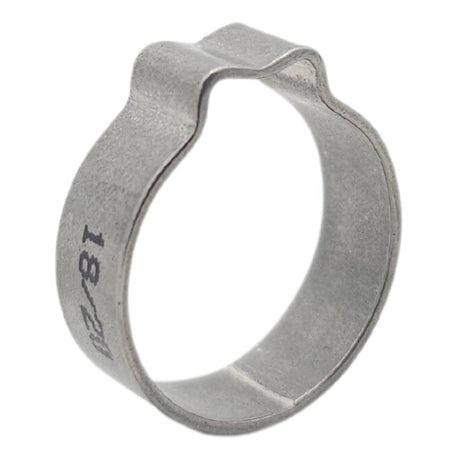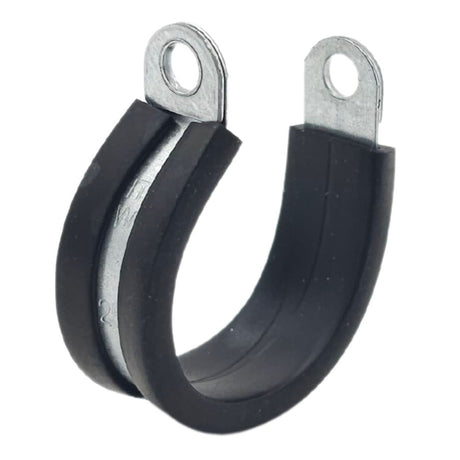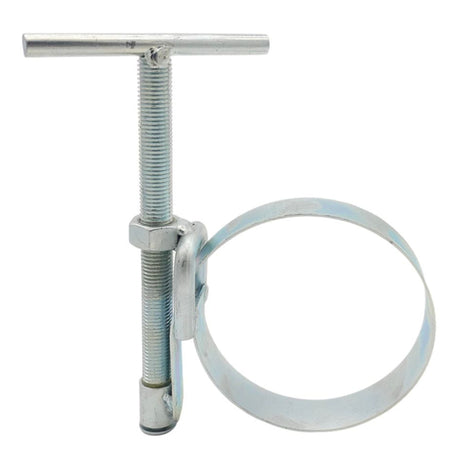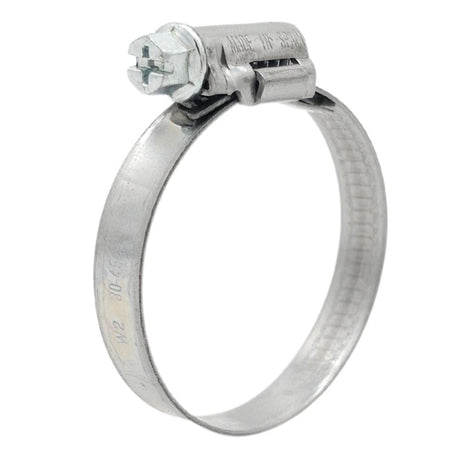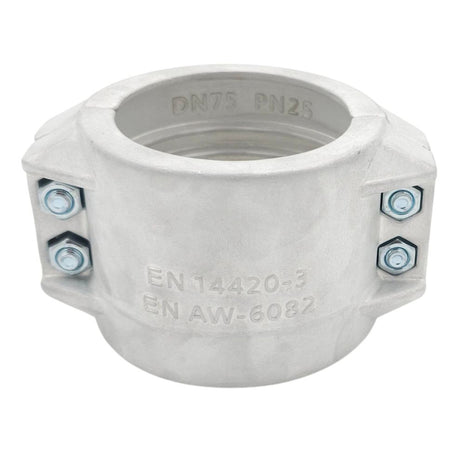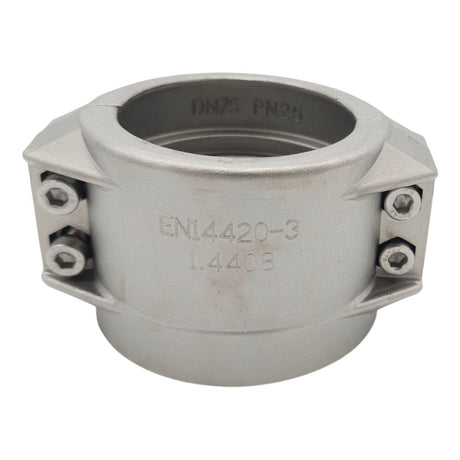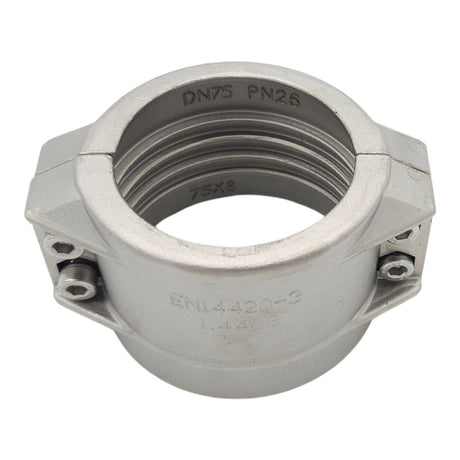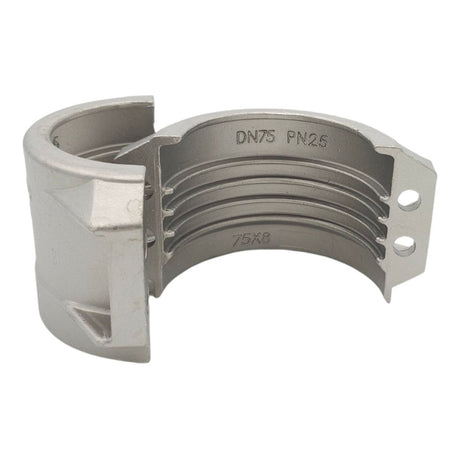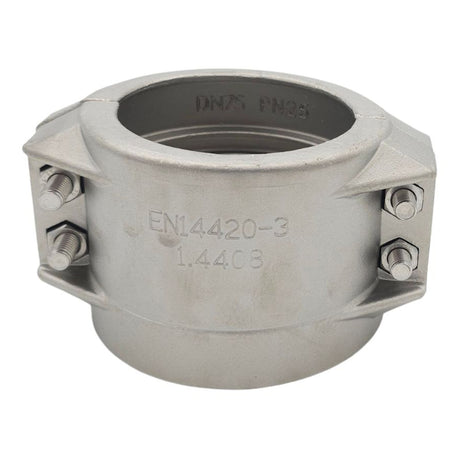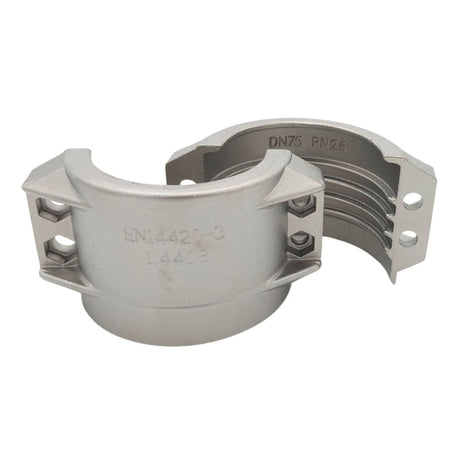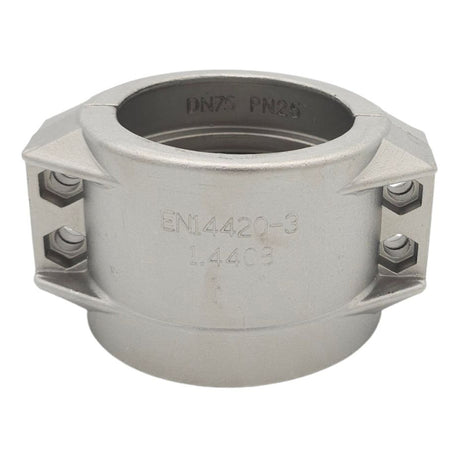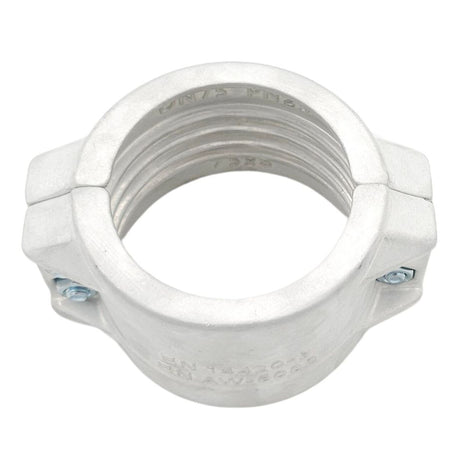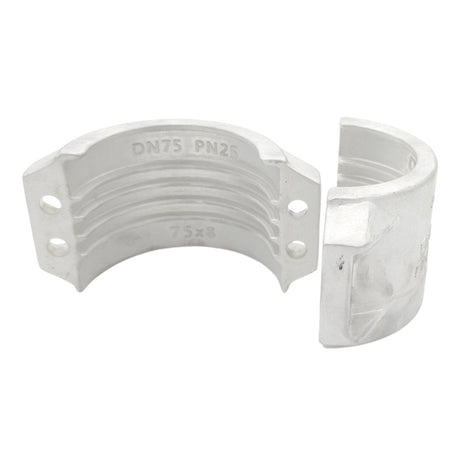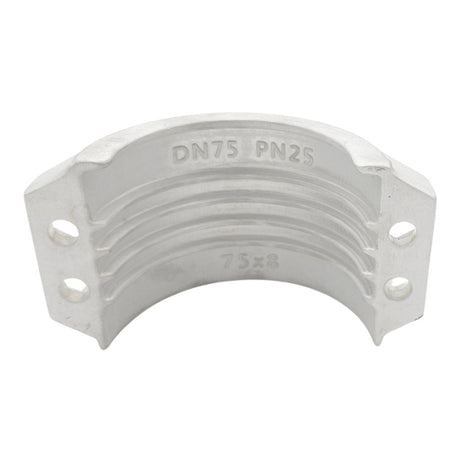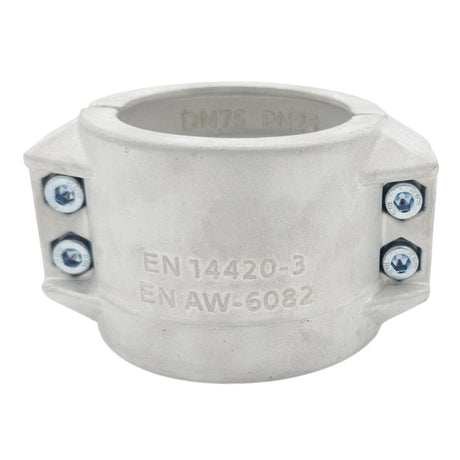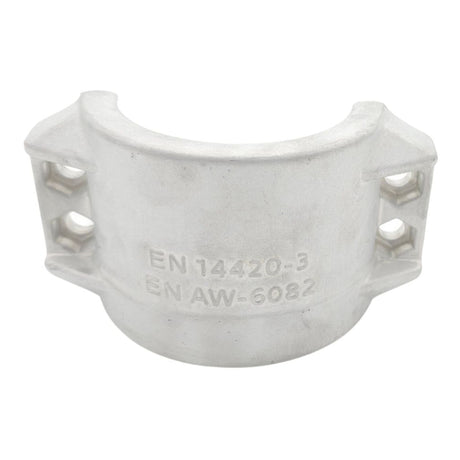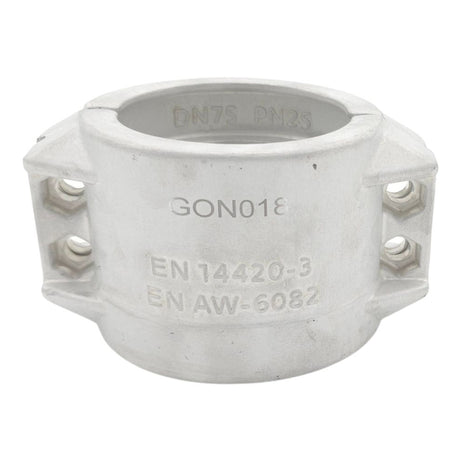
Safety clamps are devices used to secure hoses and prevent them from whipping or flailing in the event of a hose failure or disconnection. These clamps are specifically designed to enhance safety in high-pressure hose applications and reduce the risk of injury to personnel and damage to equipment caused by uncontrolled hose movements.
- Best selling
- Alphabetically, A-Z
- Alphabetically, Z-A
- Price, low to high
- Price, high to low
- Date, old to new
- Date, new to old
FiltersFilter & Sort
Safety Clamp DIN 2817 (Stainless Steel)
Regular price £0.00Unit price /UnavailableSafety Clamp DIN 2817 (Aluminium)
Regular price £0.00Unit price /Unavailable
Interested in a Quote?
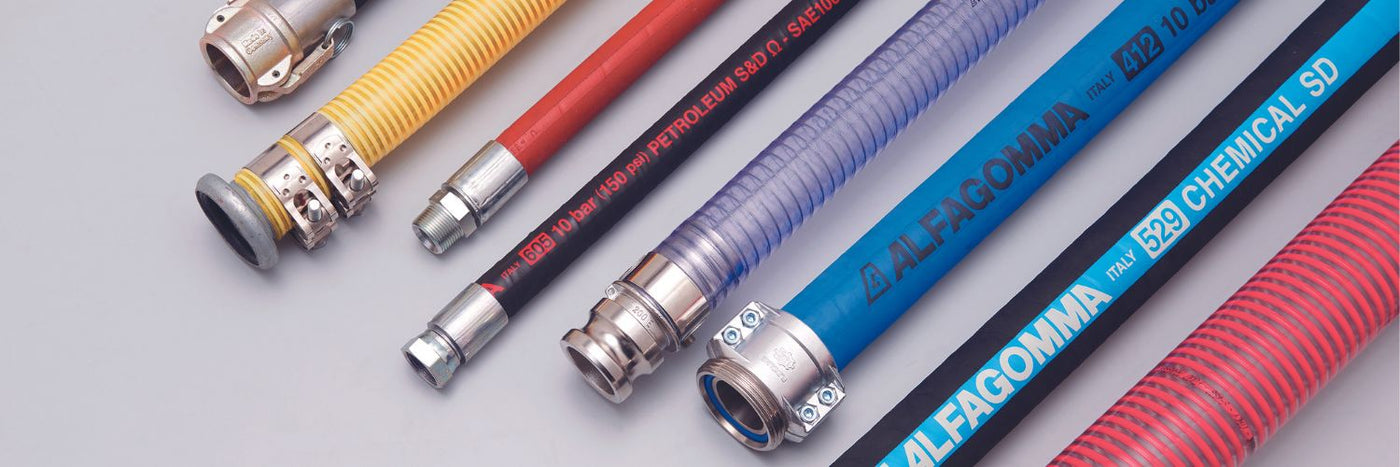
Industrial Hoses
Industrial hoses are robust, flexible tubes designed to convey fluids, gases, or granular materials under varying conditions and pressures. These hoses are employed across a diverse range of industries, including petrochemical, food processing, construction, and manufacturing, to name just a few. Made from materials such as rubber, PVC, or metal, they can be reinforced with layers of textile, wire, or other synthetic materials for added strength and durability.

Hose Couplings & Fittings
Hose couplings and fittings are essential components used to connect, adapt, or control the flow of fluid in various hose assemblies. These components can be found in a myriad of applications such as water supply, hydraulic systems, and industrial processes. Couplings come in different shapes, materials, and sizes - ranging from simple clamps and sleeves to more complex quick-connect or threaded fixtures.
Shop our Category
- Hoses & Ducting
- Clips & Clamps
- Couplings & Fittings
- Tanker Parts
- Industrial Hoses
- Ducting Hoses
- PVC Hoses
- PTFE Hoses
- Hose Accessories
- Hose Manufacturers
- Clips & Clamps
- Clamp Material
- Manufacturers
- All Couplings & Fittings
- Unicone
- Bauer
- BSP
- Camlock
- Guillemin
- Lever Lock
- RJT
- DIN 11851
- Storz
- Tank Wagon
- Toggle
- URT
- Wilcox
- Hose Carriers
- Valves
- Aeration & Filters
- Bowls, Outlet & Discharge
- Tanker Body Parts
- Chassis Body Parts
- Engine Parts
- Bulk Material Hoses
- Food Safe Hoses
- Silo Vehicle Hoses
- Water & Liquid Hoses
- Automotive Hoses
- Composite Hoses
- Agricultural Hoses
- Stainless Steel Hoses
- Abrasion Resistant (PU) Ducting
- Anti-static Ducting
- Food & Pharma Ducting
- High Temperature Ducting
- Ventilation Ducting
- Suction & Delivery Hoses
- Wire Reinforced Hoses
- Braided & Tubing Hoses
- Layflat Hoses
- Smoothbore Hoses
- Convoluted Hoses
- ProFlow (Hybrid) Hoses
- Anti-Scuff
- ID Tags
- Whipcheck Safety Cables
- Alfagomma
- Continental
- Copely
- Gollmer & Hummel
- Griflex
- IVG
- Masterflex
- Thor
- Trelleborg
- Band-it
- Constant Tension Clamps
- Ear 'O' Clips
- P-Clips
- T Bolt Clamps
- T Screw Clamps
- Worm Drive Clamps
- Safety Clamps
- W1 - Mild Steel
- W2 - Part Stainless (430)
- W3 - Full Stainless (430)
- W4 - Full Stainless (304)
- W5 - Full Stainless (316)
- Mikalor
- JCS
- Norma
- Unicone Couplings
- Bauer Couplings
- BSP Couplings
- Camlock Couplings
- Geka Couplings
- Guillemin Couplings
- Instantaneous Couplings
- Lever Lock Couplings
- RJT Couplings
- DIN 11851 Couplings
- SMS Couplings
- Storz Couplings
- Tank Wagon Couplings
- Toggle Couplings
- URT Couplings
- Wilcox Couplings
- Unicone Blanks
- Unicone Clamps
- Unicone Hose Tails
- Unicone Elbows
- Unicone Adaptors
- Unicone Seals
- Unicone Threaded
- Unicone Weld On
- Unicone Parts
- Bauer Blanks
- Bauer Hose Tails
- Bauer Adaptors
- Bauer Bends
- Bauer Seals
- Bauer Weld On
- Bauer Strainers
- Bauer T-Pieces
- Bauer Y-Pieces
- Bauer Parts
- BSP Blanks
- BSP Hose Tails
- BSP Nipples
- BSP Sockets
- BSP Reducers
- BSP Stubs
- BSP Adaptors
- BSP Bends
- BSP Spanners
- Camlock Blanks
- Camlock Hose Tails
- Camlock Adaptors
- Camlock Reducers
- Camlock Seals
- Camlock Parts
- Guillemin Blanks
- Guillemin Hose Tails
- Guillemin Adaptors
- Guillemin Reducers
- Guillemin Bends
- Guillemin Seals
- Guillemin Parts
- Lever Lock Blanks
- Lever Lock Hose Tails
- Lever Lock Adaptors
- Lever Lock Bends
- Lever Lock Reducers
- Lever Lock Weld On
- Lever Lock Threaded
- Lever Lock T Pieces
- Lever Lock Seals
- Lever Lock Parts
- RJT Blanks
- RJT Hose Tails
- RJT Adaptors
- RJT Reducers
- RJT Bends
- RJT Seals
- RJT Parts
- DIN 11851 Blanks
- DIN 11851 Hose Tails
- DIN 11851 Adaptors
- DIN 11851 Reducers
- DIN 11851 Weld On
- DIN 11851 Seals
- Storz Blanks
- Storz Straps
- Storz Hose Tails
- Storz Bends
- Storz Adaptors
- Storz Threaded
- Storz Reducers
- Storz Seals
- Storz Spanners
- Storz Parts
- Tank Wagon Blanks
- Tank Wagon VK Males
- Tank Wagon MK Females
- Tank Wagon Crowns
- Tank Wagon Locking Rings
- Tank Wagon Seals
- Tank Wagon Parts
- Toggle Blanks
- Toggle Hose Tails
- Toggle Bends
- Toggle Weld On
- Toggle Seals
- Toggle Parts
- URT Hose Tails
- URT Adaptors
- URT Reducers
- URT Weld On
- URT Seals
- URT Parts
- Wilcox Blanks
- Wilcox Hose Tails
- Wilcox Adaptors
- Wilcox Weld On
- Wilcox Seals
- Wilcox Nuts
- Wilcox Parts
- Hose Carrier Tubes
- Hose Carrier Doors
- Hose Carrier Blanks
- Hose Carrier Brackets
- Hose Carrier Locks
- Hose Carrier Keys
- Hose Carrier Accessories
- Air Shut Off Valves
- Ball Valves & Accelerators
- Butterfly Valves
- Diaphragm Valves
- Gate Valves
- Non Return Valves
- Pinch Valves
- Pressure Relief Valves
- Universal Joints
- Aeration Pads
- Aeration Socks
- Aeration Valves
- Air Filters
- Compressor Filters
- Vent Silencers
- Discharge Elbows
- Drain Pots & Outlet Connection
- Flanges
- Manlid & Accessories
- Material Line
- Sight Glasses
- Accessories
- Air Manifold
- Anti Static & Earthing
- Gas Struts & Pneumatic Cylinders
- Gauges & Thermometers
- Handrail & Catwalk Parts
- Information Holders
- Lighting & Electronics
- Load Security
- Locks & Catches
- Sensors
- Air Tanks
- Axle Catch Ropes
- Bumpers, Brackets & LED
- Landing Leg Brackets
- Mudguards & Brackets
- Side Guards
- Tool Boxes
- Air Filter Indicators
- Control Panel
- Drive Couplings & Clutches
- Electric Tip
- Engine Mountings
- Fuel Tanks
- Hand Throttle
- JCB & Yanmar
- PTO / Hydraulic

Subscribe to our emails
Be the first to know about our new products including hoses, couplings, clips, clamps & tanker parts.

